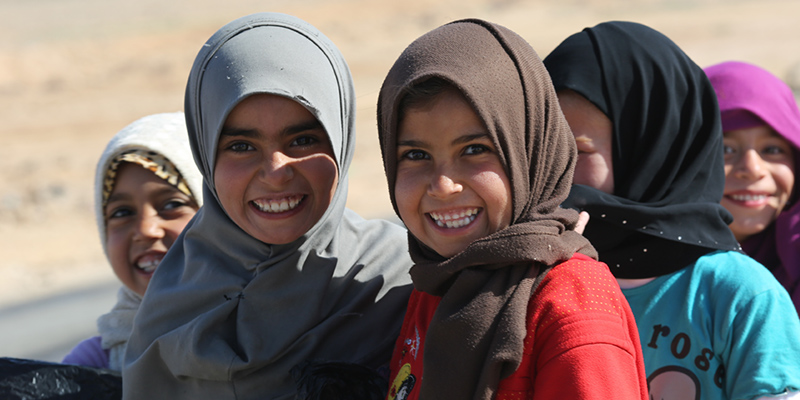Hidden mental health issues among refugees
By Annabel Mansfield
 HUMANITIES
HUMANITIESEveryday 37,000 people* are forced to flee their homes because of conflict and persecution; shockingly, more than half of these are children. For young people, the terror doesn’t just stop once they’re ‘safe’ and resettled in a new country – instead, the nightmares linger, resurfacing as serious issues in mental health.
Identifying children at risk is critical but knowing how to help can be extremely difficult. As a frontline service, schools play a vital role in identifying and helping vulnerable children of refugee backgrounds but, according to new research by UniSA’s Dr Melanie Baak and colleagues, there are still many barriers that are hindering support, including understanding behaviours, interpreting differences in culture and language, and identifying warning signs of poor mental health.
Surveying 78 Australian school staff and conducting in-depth interviews with 27 service providers and school staff, Dr Baak found that staff, teachers and mental health service providers all struggle to identify and help young refugees with mental illness.
“School staff find it difficult to identify behaviours that reflect mental health distress in students from diverse cultural backgrounds,” Dr Baak says.
“This is partly because mental health issues can be masked by other behaviours such as poor concentration, increased absenteeism or difficulties in making friendships – things that are often explained away as challenges with fitting in.
“But there’s also the issue that many staff assume that a child’s past trauma is the major cause for their unrest. Obviously, this contributes, but it’s vital that staff recognise that ongoing daily stressors such as family, financial or health challenges, can also impact children’s mental health.”
Dr Baak says that these misunderstandings make it difficult for teachers to identify and approach students they suspect may have a mental health concern.
“Teachers may be hesitant to enquire about students’ lives, especially if they are worried it may bring up past traumas,” Dr Baak says.
“Others may believe that students should focus on their studies and move on from past experiences, which really shows a lack of understanding of the potential ongoing effect of trauma.
“What people need to understand is that refugees’ problems do not simply disappear when they arrive in Australia – yes, their immediate danger is removed, but a whole new set of challenges appear when they enter a new country – they face a new culture, new language, new rules and enter a system that is frequently unwilling or unable to learn about the cultural and linguistic backgrounds and assets that students bring with them. It’s extremely overwhelming and be very isolating for refugee children and families.”
These challenges also extend across mental health services.
“Limited awareness of appropriate mental health services and referral pathways in schools, particularly for non-English speaking refugees is a significant issue,” Dr Baak says.
“In Australia, counselling services are usually only offered in English and undertaken with counsellors who may not have been trained to address mental health issues in people from non-Western backgrounds.
“Furthermore, off-site mental health services can be difficult to access for teenage refugees, especially if students are reluctant to acknowledge the nature of their own problems, or to share those problems with family or staff.
“So, we’re really looking at a very multi-layered and complex issue.”
Yet, beyond the immediate challenges there is hope, says Dr Baak, with training programs, cultural awareness, and the facilitation of well-defined wellness and mental health services all within reach.
“Schools can improve outcomes for students from refugee backgrounds by connecting with services in the local community, particularly specialist services that are focused on service provision for culturally and linguistically diverse clients,” Dr Baak says.
“Dedicated bi-cultural workers that are employed within schools can also bridge communication and understanding between students, families, and school staff.
“What we need are strategies that collaborate with families from refugee backgrounds; these are far more likely to have a positive impact on the mental health of individuals than kids that are trying to cope alone.”
* Australia accepts approximately 18,500 refugees per year through the humanitarian entrant program.
The full paper, The Role of Schools in Identifying and Referring Refugee Background Young People Who Are Experiencing Mental Health Issues, by Baak M, Miller E, Ziersch A, Due C, Masocha S, Ziaian T. (2020), is available in the Wiley Online Library.
This story was developed from a media release produced by the Media Centre for Education Research Australia (MCERA).
Other Stories
- World-first contraceptive gel developed by UniSA researcher to hit the US market
- UniSA wins $7.8m for research to prevent infections, diagnose medical conditions and improve aged care
- SA scientists find breast cancer link in world breakthrough
- Alien frog invasion wreaks havoc on natural habitat
- From the Vice Chancellor
- Achievements and Announcements
- Video: Parenting in a pandemic – how children’s lives will change after COVID-19
- The death of open plan offices? Not quite, but trust and autonomy the new norm in workplaces
- Winter at home is much more enjoyable in a warm house
- UniSA Online offers new 100 per cent online accredited psychology degree
- Workplace flexibility: will it disappear with social distancing?
- Hidden mental health issues among refugees
- Veteran and first responder wellbeing program to expand by offering occupational therapy
- The latest books from UniSA researchers
- In Pictures: UniSA students head back to school




